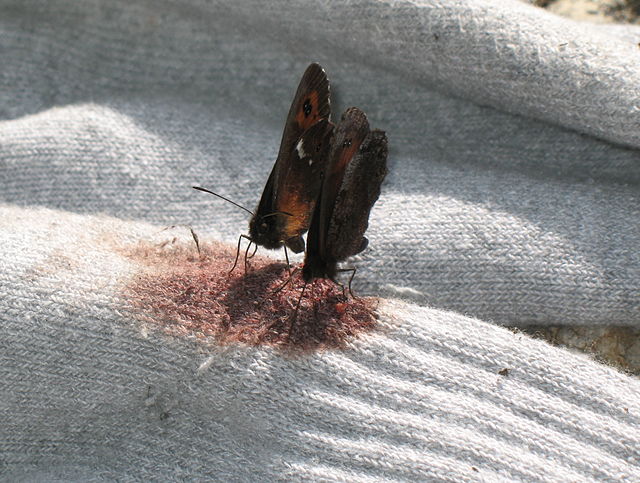Hematophagy is the practice by certain animals of feeding on blood. Since blood is a fluid tissue rich in nutritious proteins and lipids that can be taken without great effort, hematophagy is a preferred form of feeding for many small animals, such as worms and arthropods. Some intestinal nematodes, such as Ancylostomatids, feed on blood extracted from the capillaries of the gut, and about 75 percent of all species of leeches are hematophagous. The spider Evarcha culicivora feeds indirectly on vertebrate blood by specializing on blood-filled female mosquitoes as their preferred prey. Some fish, such as lampreys and candirus; mammals, especially vampire bats; and birds, including the vampire finch, Hood mockingbird, Tristan thrush, and oxpeckers, also practise hematophagy.

An Anopheles stephensi mosquito obtaining a blood meal from a human host through its pointed proboscis. Note the droplet of blood being expelled from the engorged abdomen. This mosquito is a malarial vector with a distribution that ranges from Egypt to China.
A bedbug
Two butterflies of the genus Erebia sucking fresh blood from a sock
Leeches are segmented parasitic or predatory worms that comprise the subclass Hirudinea within the phylum Annelida. They are closely related to the oligochaetes, which include the earthworm, and like them have soft, muscular segmented bodies that can lengthen and contract. Both groups are hermaphrodites and have a clitellum, but leeches typically differ from the oligochaetes in having suckers at both ends and in having ring markings that do not correspond with their internal segmentation. The body is muscular and relatively solid, and the coelom, the spacious body cavity found in other annelids, is reduced to small channels.
Image: Sucking leech
Image: Europäischer Platt Egel cropped
Haemadipsa zeylanica, a terrestrial leech
Fossil of a worm that was once considered as leech but denied, from the Waukesha Biota, in the Silurian of Wisconsin







